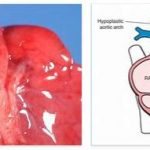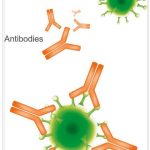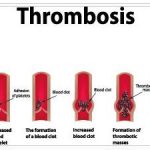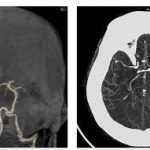A popliteal entrapment syndrome is a blockage of the popliteal artery in the popliteal fossa. Hypertrophy of the gastrocnemius muscle is usually responsible for the compression of the artery. The treatment of choice is surgical decompression of the blocked blood vessel.
What is Popliteal Entrapment Syndrome?
The medical term Arteria poplitea is the continuation of the femoral artery or Arteria femoralis. The popliteal artery runs from the adductor hiatus through the popliteal fossa and thus reaches the lower part of the popliteus muscle, where it branches off into the anterior tibial artery and posterior tibial artery. See howsmb for Hip Joint Inflammation Definition and Meaning.
Like all arteries, the popliteal artery carries blood from the heart to the peripheral tissues of the body, and accordingly away from the heart. The tissue supply with blood in turn corresponds to a supply of oxygen, nutrients and messenger substances on which all tissues of the body are absolutely dependent.
Popliteal Entrapment Syndrome is a combination of different symptoms that can be caused by compression of the popliteal artery. The combination of symptoms occurs predominantly with compression of the artery in the tissues of the popliteal fossa. In most cases, the gastrocnemius muscle and its ligaments are involved in the compression. The occlusion of the artery can lead to a complete popliteal artery occlusion.
Causes
Popliteal entrapment syndrome is caused by obstruction of the popliteal artery. In most cases, the artery gets stuck during exercise. The gastrocnemius muscle often slides over the artery, causing compression. In addition to athletes, people with a hypertrophic gastrocnemius muscle are particularly at risk of getting stuck.
Hypertrophies are enlargements of tissues caused by cell enlargement. In principle, most hypertrophies develop as a result of functionally increased stress. The gastrocnemius muscle can therefore hyperplasia through regular training. However, tissue can also be hypertrophic from birth or become larger due to hormonal connections.
Since the popliteal artery runs in the immediate vicinity of the muscle and its ligaments, compression can easily occur when the muscle enlarges. Both anatomical structures must pass through the popliteal fossa, i.e. they run directly adjacent through an anatomical constriction. The likelihood of compression within the popliteal fossa is therefore inherent.
Symptoms, Ailments & Signs
The popliteal entrapment syndrome is expressed by a complex of different symptoms. Those affected are most often young men up to the age of about 35 years. The main symptom of compression is a pathologically altered foot pulse.
For example, the foot pulse of those affected often disappears completely with certain movements and activities. When extending the knee in patients with popliteal entrapment syndrome, in most cases no foot pulse can be detected. The foot pulse also seems to drop out when the affected foot is dorsiflexed.
Due to the compression, circulatory disorders occur, which can manifest themselves, for example, in a slightly sagging foot. The syndrome rarely causes pain. However, an altered warm-cold perception can occur. Bilateral compression of the artery has been reported in many cases. Depending on the severity and duration of the compression, arterial walls may be damaged.
Diagnosis & course of disease
Diagnostic methods such as Doppler or duplex sonography are used to diagnose popliteal entrapment syndrome. During the examination, the doctor asks the patient to extend the knee or dorsiflex the foot, thus documenting the cessation of the arterial current pulse in the popliteal artery in patients with the syndrome.
In most cases, the diagnosis cannot be made at rest. This means that sonography of the motionless foot does not provide any indication of popliteal entrapment syndrome. The prognosis for patients with the syndrome is favorable. In individual cases, the compression resolves itself. In all other cases, the doctor must intervene as quickly as possible after the diagnosis in order to rule out secondary diseases.
Complications
The primary cause of entrapment syndrome is an altered foot pulse. In most cases, the patient can also feel this. This change is particularly noticeable during physical exertion or sporting activities. Furthermore, the compression can lead to various blood circulation disorders, so that the feet fall asleep or tingle.
Paralysis or other sensory disorders can also occur in entrapment syndrome and significantly reduce the quality of life of those affected. Cramps or pain can also occur. In many cases, those affected also lose the cold/warm sensation and can no longer distinguish between these states. Failure to treat entrapment syndrome can result in irreversible damage that can no longer be treated or restored.
Entrapment syndrome can usually be treated with surgery. There are no complications or other special complaints. However, the affected person is also dependent on therapy after the procedure, so that several years can pass before the foot can be loaded in a normal way again. The patient’s life expectancy is usually not reduced by entrapment syndrome.
When should you go to the doctor?
Since this disease is a congenital disease that does not heal itself, a doctor must be consulted in any case. A doctor’s visit is necessary if the person concerned suffers from a reduced foot pulse. This can happen very suddenly and for no apparent reason. Circulatory disorders occur and, in many cases, severe pain as well, so that the patients also suffer from walking difficulties, which significantly limit and reduce their quality of life. Furthermore, the affected arteries can also be completely damaged if treatment is not initiated.
This syndrome is usually treated by a specialist, although the disease can also be diagnosed by a general practitioner or an orthopaedist. There are no particular complications and the symptoms can usually be alleviated. The life expectancy of those affected is also not negatively affected by the disease. Since the syndrome generally has a negative effect on the quality of life of those affected, it can also lead to psychological problems, so that in some cases a visit to a psychologist can be useful.
Treatment & Therapy
The popliteal entrapment syndrome is treated causally. The compression of the artery is relieved by the doctor as part of a surgical procedure. To plan the operation, the surgeon needs a comprehensive overview of the obstruction. He gets this overview with methods such as angiography, CT or MRT.
During the operation, the doctor removes individual parts of the gastrocnemius muscle in order to free the popliteal artery from the blockage. Surgical decompression is often carried out relatively immediately after the diagnosis is made, since the obstruction increases the risk of thrombosis and should therefore be resolved as quickly as possible. After the operation, the affected leg should initially be rested.
Targeted physiotherapy after surgical decompression may be required to bring the leg back to normal weight bearing capacity. In individual cases, the muscle hypertrophies again years after the operation and a second decompression operation has to be scheduled. As a rule, patients recover quickly after decompression. All of the symptoms of popliteal entrapment syndrome usually resolve once the artery is freed from the obstruction.
Prevention
The popliteal entrapment syndrome can be caused by incorrect loading. For this reason, the syndrome can be prevented insofar as the popliteal muscles are strained with reason. If there is a tendency towards hormonal imbalances, it can also be useful for prevention to have your own hormone status checked regularly and, if necessary, to counteract rising growth hormone concentrations.
Aftercare
Follow-up care is only possible to a limited extent here, since popliteal entrapment syndrome is a congenital disease. The focus is therefore mainly on alleviating the symptoms through symptomatic aftercare. Since this disease required an operation, the affected leg should be rested afterward and physical exertion should be avoided.
Physiotherapy can also help to improve the leg’s resilience and bring it back to normal. Here it is important to observe a good mix of stress and rest breaks. Diet also plays an important role in aftercare, since being overweight can increase the symptoms. Since the disease can have a negative impact on the patient’s quality of life, especially in athletic people, psychological support is necessary in some cases.
After being diagnosed with Popliteal Entrapment Syndrome, a follow-up visit to your GP is advisable to determine if there are any hormonal imbalances or problems. In some cases growth hormones have to be taken. The prognosis for politeal entrepment syndrome tends to be positive. Symptoms can be alleviated and life expectancy is not affected by the disease.
You can do that yourself
Popliteal entrapment syndrome is usually cured with surgery. After that, the lower leg is properly supplied with blood again, with additional therapies serving as support.
After the operation, patients are only allowed to carefully put weight on their leg and foot. The rest phase is followed by physiotherapy, which makes the knee flexible and restores normal resilience. Here, those affected should make sure to maintain the right balance between exercise training, stress and rest breaks. In order to prevent renewed hypertrophy of the muscle, the physiotherapeutic measures can be continued continuously. In addition to physical exercise, diet also plays a certain role, because overweight increases the symptoms.
Especially in athletes and active people, the diagnosis is often a psychological burden. That’s why it can make sense to find a self-help group. Here those affected encourage each other and can exchange their individual experiences. When the first symptoms appear and also at a later point in time, incorrect and excessive strain should be avoided at all costs. That is why it is so important that the knee muscles are used to a reasonable extent. Regular monitoring of the hormone status is not only recommended for young people.








